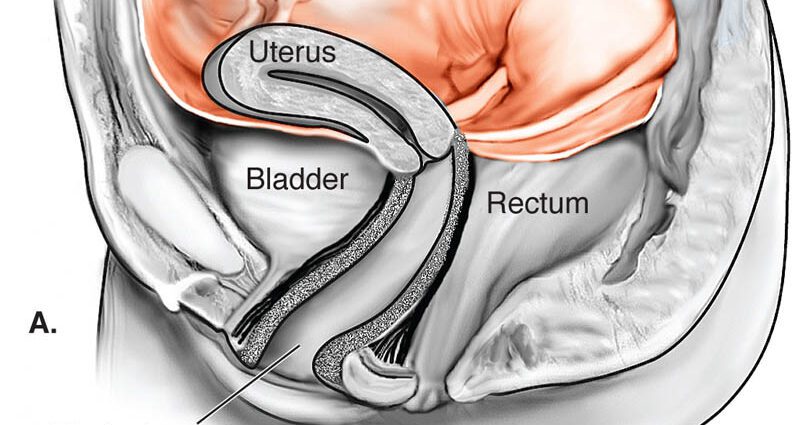Contents
Rokitansky: all about Mayer Rokitansky syndrome
Rare syndrome of genetic origin, Mayer Rokitansky Syndrome is characterized by a total or partial congenital absence of the vagina and uterus with preserved ovaries. It is associated with repercussions on sex life and psychological disturbances that can be treated.
What is Mayer Rokitansky Syndrome?
Mayer Rokitansky Küster Hauser Syndrome (SMRKH) is a rare congenital syndrome (one in 4500 women) affecting the vagina and uterus that are partially or totally absent. If it is a disease of genetic origin, no hereditary cause has been formally found.
How is it transmitted?
Its mode of genetic transmission remains, to this day, poorly defined, even if familial forms have been described and suggest a genetic form of the syndrome, but associated with a modification of the expression of the defective gene during intrauterine life due to the fact environmental factors.
Taking a drug against nausea and vomiting during pregnancy, distilbene, would have favored this modification of the expression of this gene without this having been formally proven. This drug was withdrawn from the market in the mid-1970s because of the observation of these gynecological malformations in girls and young girls whose mothers had taken Distilbene. This drug would have had an impact on the DNA of these children, modifying this potentially defective gene.
What are the symptoms of Mayer Rokitansky Syndrome?
There are several forms of Mayer Rokitansky Syndrome.
The most benign
It is a syndrome in which an absence of periods at puberty is found without identifiable anatomical malformations.
An intermediate form
It is associated with a malformation of the vagina and an absence of a uterus, with sometimes (30% of cases) renal abnormalities.
A more severe form
This combines gynecological malformations of the vagina and uterus with malformations of the kidneys and vertebrae, in particular cervical, dorsal, and thoracic skeleton, and shoulder joints and bones, causing scoliosis in 11% of cases. .
The diagnosis is most often made at puberty in the absence of menstruation (primary amenorrhea). Gynecological examinations (pelvic ultrasound or pelvic laparoscopy) will show a partial absence or not of the vagina which can be reduced to a small cup and a total absence of the uterus.
The sexual characteristics are preserved with a pubic hair, a developed vulva and clitoris whose sensitivity is present, the formation of breasts. Orgasms are possible by vulvar and clitoral stimulation, but penetration is difficult, painful or even impossible due to the small size or absence of the vagina. It is a syndrome that does not allow to consider pregnancy either, given the absence of a uterus.
What are the consequences of Mayer Rokitansky Syndrome?
The consequences of this syndrome are of two different kinds:
Impact on sex life
A sex life is complicated if not impossible, even if hormones and secondary sex characteristics are preserved. These difficulties, associated with an absence of pregnancy plans, have significant psychological consequences.
Psychological difficulties
Psychological difficulties at puberty with alteration of the body image in young girls affected by this syndrome, self-esteem, presence of gender identity conflicts, anxiety around love life and subsequent couple.
This is why the diagnosis must be evoked and confirmed gradually to prepare the girl and her parents for this possibility and the subsequent consequences of this syndrome. This medico-psychological care will be carried out by a multidisciplinary team with a general practitioner or pediatrician, the gynecologist, a psychologist and a specialist opinion on this syndrome.
How to treat Mayer Rokitansky Syndrome?
Treatments can be offered to reduce the physical and psychological consequences of this syndrome. Their objective is to improve the psychological and sexual quality of life of these young patients and therapeutic adherence is essential for carrying out these various treatments.
Gradual dilation of the vagina
This is possible to recreate a vaginal cavity deep enough for sexual intercourse (coitus). But it is necessary to have a vaginal cup at the start (short vagina) so that this dilation can take place, often over several months. It can be started when the young patient feels ready and motivated for this treatment, which is restrictive.
A surgery
Otherwise, surgery is possible with reconstitution of a vagina from tissue taken elsewhere in the body. But this intervention is often difficult to carry out and will have to be the object for its indication of more advanced gynecological explorations.
Psychological support
Finally, psychological support will be necessary for the parents and the young girl concerned to bring out all the questions that arise with regard to sexuality, pregnancy for the moment difficult to envisage (uterus transplants have been already achieved, but without real success), of the image of oneself as a woman.
The participation of one of the patient associations such as the Rokitansky Syndrome Association can make it possible to find answers to the difficulties encountered during the course of care through exchanges of experience.
Alternatives to pregnancy can be suggested such as adoption or surrogacy, but which is prohibited in France.










